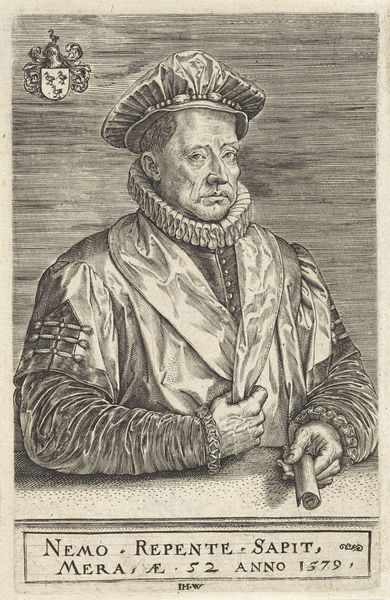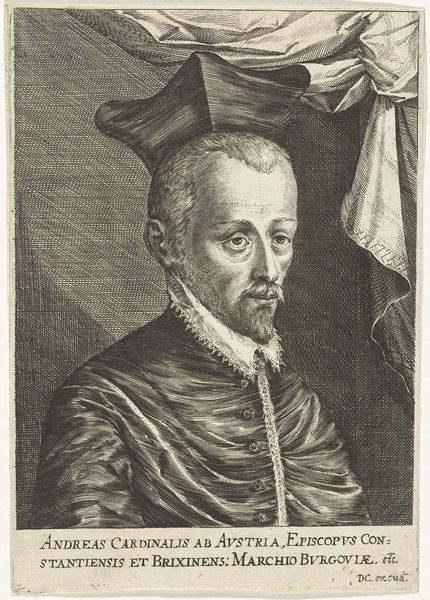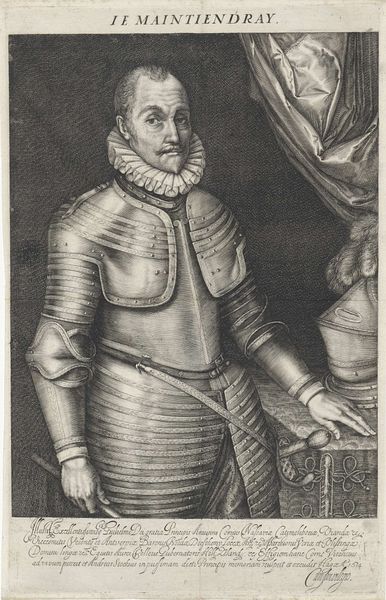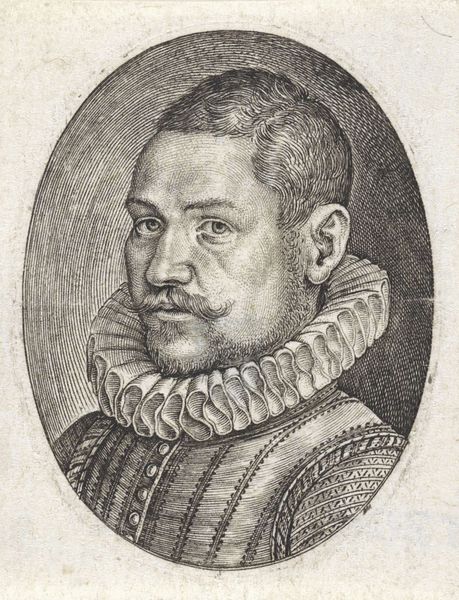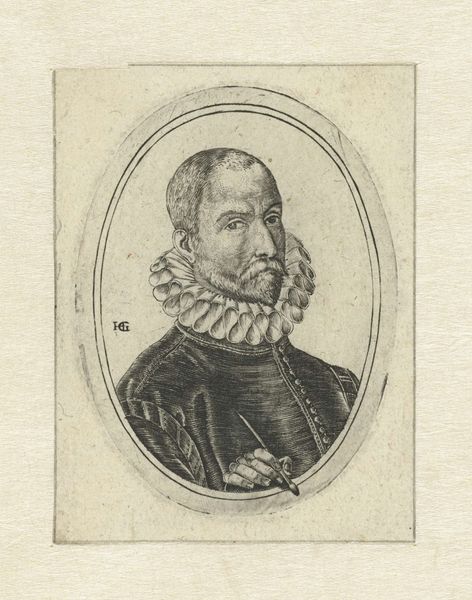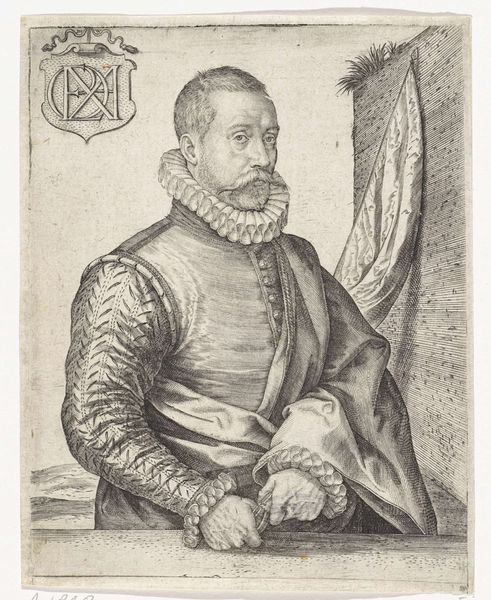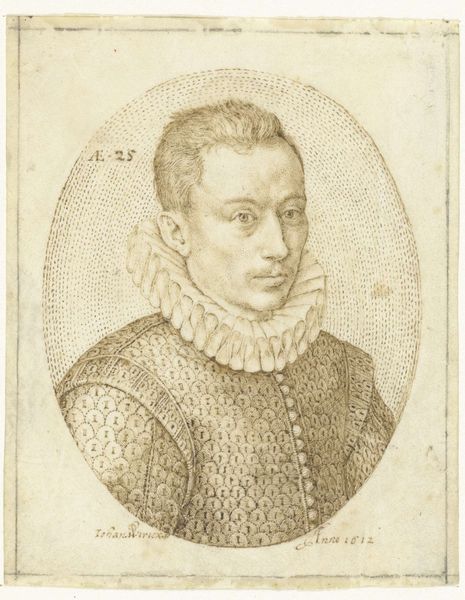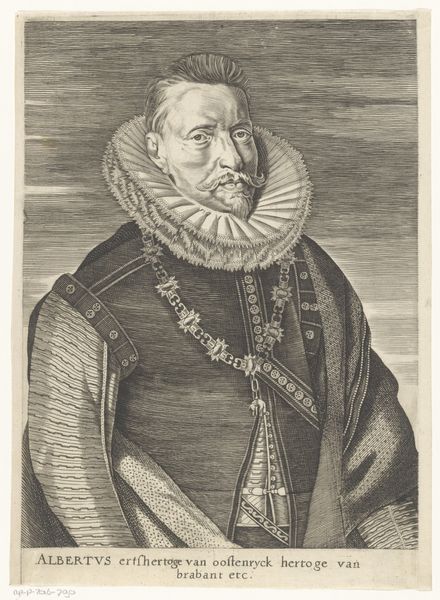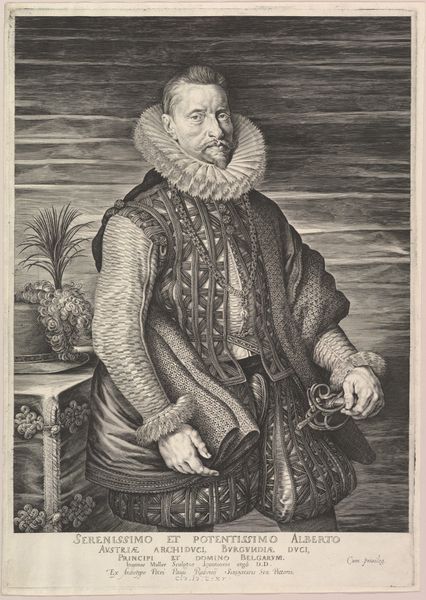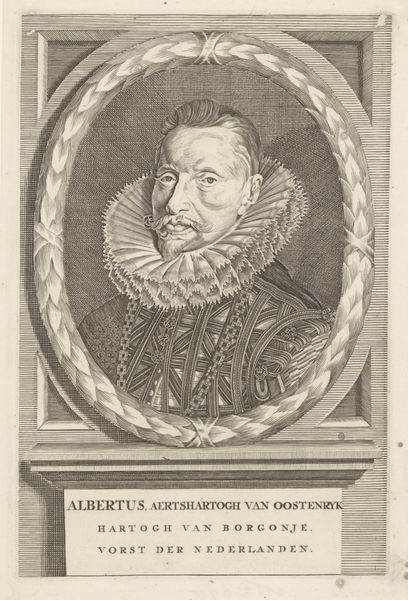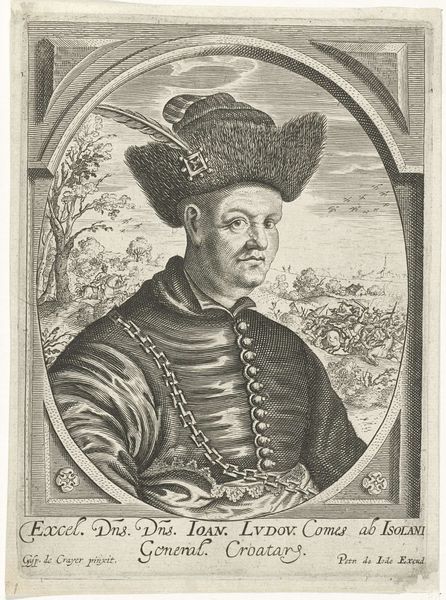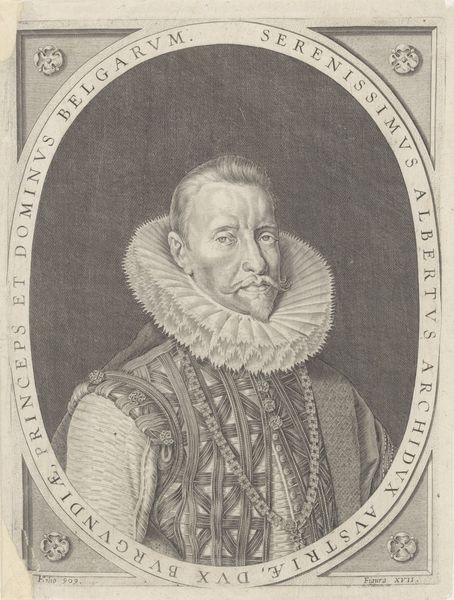
print, engraving
#
portrait
#
baroque
# print
#
portrait drawing
#
engraving
Dimensions: height 143 mm, width 97 mm
Copyright: Rijks Museum: Open Domain
Editor: This is "Busteportret van een man," or "Bust Portrait of a Man," an engraving by Wierix from before 1620. It’s at the Rijksmuseum. I'm struck by the detail in his ruff and clothing. It looks very regal, but his gaze feels rather… intense. What story do you think this piece is telling? Curator: Well, let’s think about the function of portraiture during this period. It wasn't simply about capturing a likeness, but about conveying status, power, and perhaps, aspiration. The detail you mention isn't accidental. The elaborate ruff, the fur trim – these were markers of wealth and social standing. So, what do those things represent at the time this image was created? Editor: Wealth represents their status in life and allows others to perceive the qualities they associate with affluence, like confidence. The fur indicates this person might live somewhere with a cold environment and access to exotic trades. Curator: Exactly! And where were these portraits often displayed? They weren't just private mementos. They had a public function. Placed in homes or even gifted as diplomatic tools, these portraits reinforced social hierarchies and familial lineages. Who was consuming these images and how did that influence the image? Editor: So, it was about projecting an image, a carefully constructed persona for a specific audience…like a carefully curated profile? Is there anything else, apart from the sitter's clothes, which indicate social standing or their role in society? Curator: I agree, it is very much about projecting an image. Consider the blank space beneath the bust. This was intentionally left so that it could later be personalized with the coat of arms, name, and even a motto connected to the individual depicted. Editor: That really sheds new light on it! I thought the empty space was maybe just unfinished. Seeing it as intentional, awaiting personalization that proclaims identity and values... it makes the portrait feel even more deliberately constructed. Curator: It reminds us that art objects are often active participants in shaping social narratives, reinforcing certain values and excluding others. Even an unfinished element can communicate something about the person or society being represented.
Comments
No comments
Be the first to comment and join the conversation on the ultimate creative platform.
